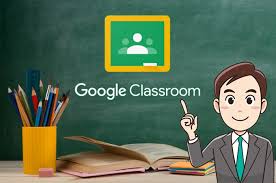In the classroom, collaborative learning fosters a supportive and welcoming atmosphere where students and teachers cooperate to accomplish shared objectives. During collaborative activities, there is more opportunity for connection, support, and the sharing of experiences, all of which help to develop deep and meaningful relationships between students and teachers. A strong student-teacher relationship in the classroom is an engagement that tries to foster mutual respect and trust. Getting to know your students better, providing them with alternatives, and inspiring them to study more successfully every day are all ways to build a closer relationship with them. Teachers who engage in this way appreciate their students and acknowledge their individuality. When students and educators get along, a safe and pleasant learning atmosphere is generated in the classroom. This accelerates students’ intellectual advancement. The application of collaborative learning involves teachers and students both learning from one another. There is a sense of mutual progress and appreciation as a result of the teacher appreciating the significance of the contributions provided by the students and the students appreciating the instructor’s efforts to facilitate their learning. I believe that groups can participate in a range of activities, from spontaneous talks to more organized collaborative group activities. Collaborative group learning is one method that students can use to communicate with other students in the course. Successful collaborative group activities give participants a sense of community and give them a shared active role and responsibility within their existing groupings. In well-designed learning environments, higher-order thinking abilities are developed, meaningful learning takes place, and an eLearning community where cooperative group activities are encouraged begins to form for online learners.

It takes time and work to develop a great classroom community, but the rewards are enormous. While supporting students’ social and emotional growth and improving academic achievement, a supportive and connected learning environment can have a long-lasting effect on their general well-being. Online discussion forums are one of the simplest ways to promote student participation and enhance everyone’s learning in order to promote a sense of community in the classroom. Post discussion ideas on a daily or weekly basis to promote discussion and encourage students to approach the course material in new ways. The solution to a dynamic and fascinating online discussion is to use open-ended discussion questions that promote opposing viewpoints. It will be beneficial for me to encourage students to assess the sources, share their opinions, and possibly even stir up some disagreement.
In my course prototype, I made a video on Lumi, and I also use Google Classroom, where I upload videos, and activities for students. Google Slides, rubrics, and quizzes. I Try to add notes, links, or voice explanations right to the images to make sure students are engaged with my material. These interactive features direct the student and assist them in paying attention to the information we wish to highlight.

In addition to this, I like Zoom and video conferencing because they allow students to connect in smaller groups when they need any kind of aid. Even in a remote setting, Zoom meetings for collaborative learning can be quite productive. To solve their problems, I can set up Zoom meetings. On this platform, I am best able to continually and consistently instruct my students. The Visual Prompt will also be used by me to guide pupils when they closely analyze an image. To separate students into smaller groups for teamwork exercises and conversations, I can use Zoom’s breakout rooms function. Give each group a distinct assignment or subject to work on. Through this learning activity, students learn how to develop conceptual learning techniques, how to think critically, and, how to notice and understand.

In conclusion, for online learners to achieve success and be happy, a sense of community is crucial. Teachers can provide possibilities for the community by planning a course, interacting with students, and providing activities. The work to develop these chances will probably prove to be well worth it. Even when students are only staring at a computer screen, collaborative learning practices can help them feel engaged and connected. Planning ahead and using the right tools are essential to facilitating participation, and I’ll undoubtedly use a variety of technologies to make my course prototype engaging and create a collaborative learning atmosphere in the classroom.
